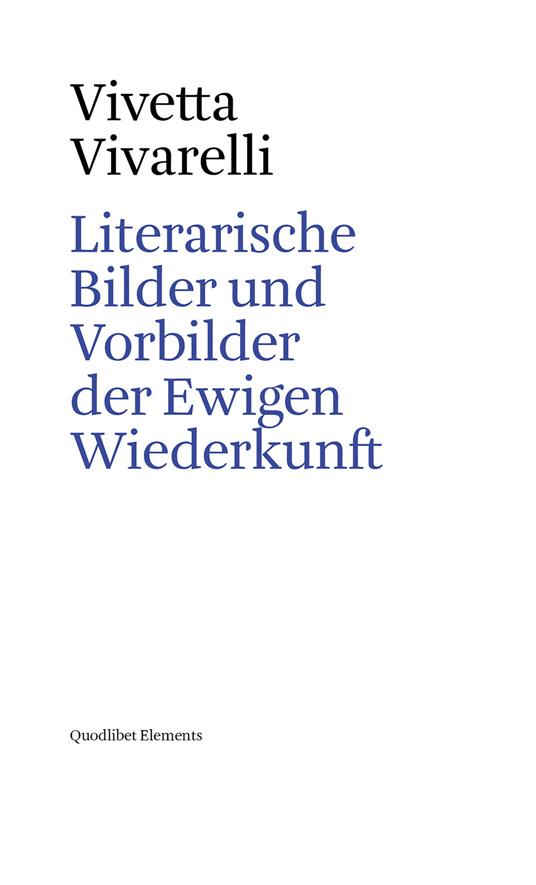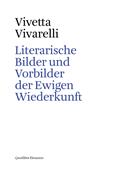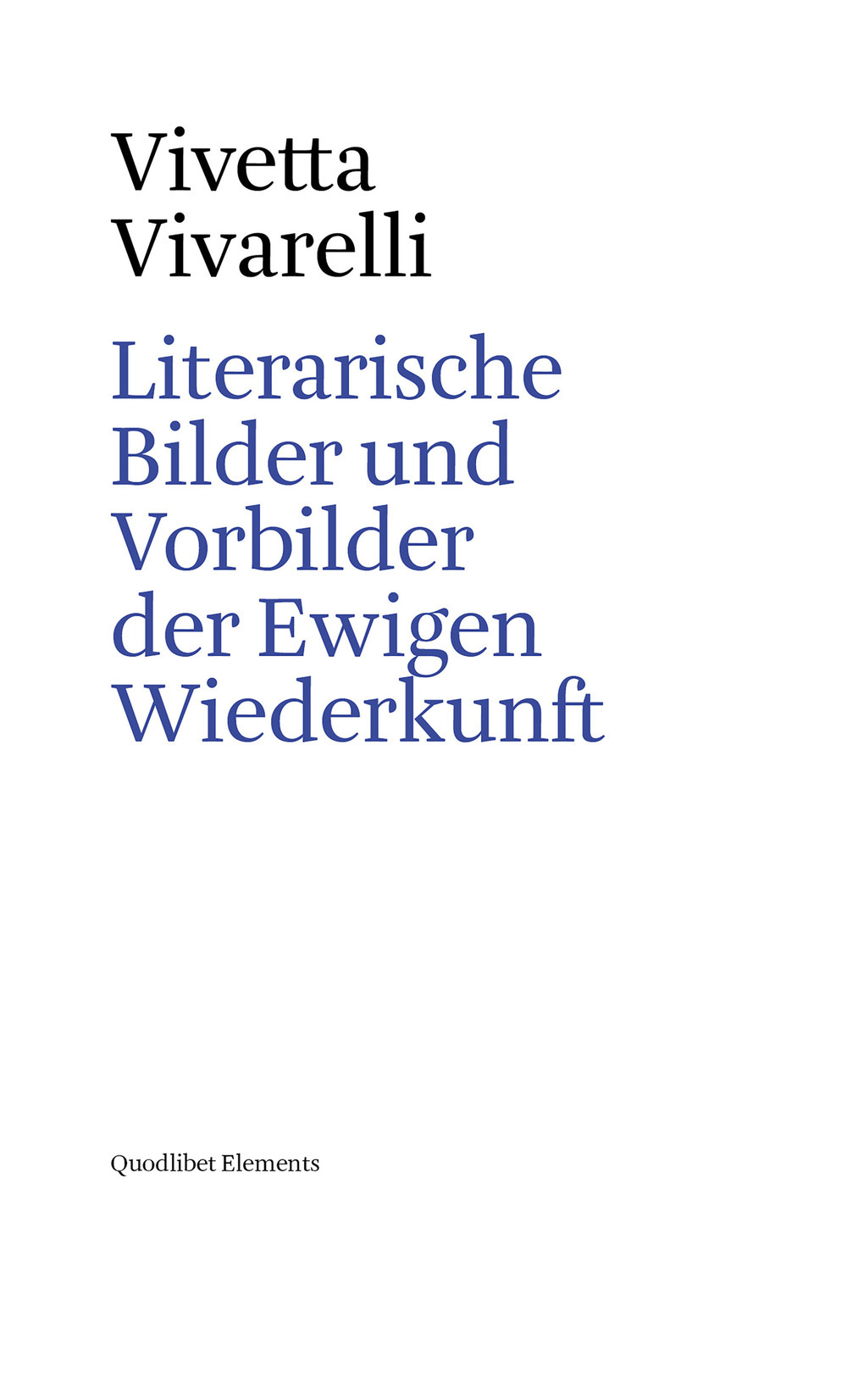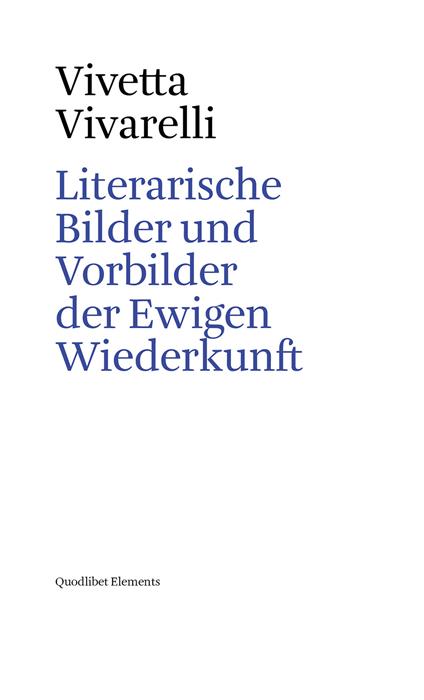Literarische Bilder und Vorbilder der Ewigen Wiederkunft
«Ist Nietzsches "abgründiger Gedanke" auch eine auf das Diesseits bezogene Wette, ein Versuch, den pascalschen Abgrund der Leere einer Welt ohne Gott zu füllen? Anhand einiger in Nietzsches Bibliothek enthaltener Bände versucht dieses Buch Aufschluss über diese rätselhafte Lehre zu geben». DE. Der erste und einzige Aphorismus, den Nietzsche der Idee der ewigen Wiederkunft widmet, fängt mit einer Frage an: «Wie, wenn [...] ein Dämon [...]?» Dieselbe Frage «Wie wär' es, wenn der Dämon [...]?» stand im Mittelpunkt eines der schönsten Briefe des jungen Philologen Erwin Rohde an Nietzsche und bezog sich hier auf die tief erlebten gemeinsamen Augenblicke. Welches ist also der biografische und literarische Hintergrund dieses rätselhaften Gedankens, den Nietzsche in seinen Aufzeichnungen durch wissenschaftliche Hypothesen zu stützen versuchte? Ist die ewige Wiederkunft ein Versuch, der Leere der Welt nach dem Tod Gottes zu entkommen? Was haben die Zeitauffassungen von Marc Aurel, Montaigne und Pascal, ihre Gedanken zur Spannung zwischen Vergänglichkeit und Dauer, aber auch einige Bilder von Leopardi damit zu tun? Wie schließlich hängt das berühmte Mitternachtslied im Zarathustra mit der ewigen Wiederkunft sowie mit Rohde und Wagner zusammen? Anhand einiger in Nietzsches Bibliothek enthaltener Bände versucht dieses Buch Aufschluss über einen Gedanken zu geben, in dem Nietzsches radikaler Rationalismus – wie Mazzino Montinari schrieb – zu seinen letzten, hellsichtigen Aporien gelangt. EN. The first and only aphorism that Nietzsche devotes to the idea of eternal return begins with the words: "What, if a demon [...]"? The same words "What would be, if the demon [...]?" appeared in one of the finest letters the young philologist Erwin Rohde sent to Nietzsche, and which referred to deeply felt moments they spent together. This study seeks to recreate the biographical and literary background to the intriguing idea that Nietzsche tried to support in his notes with scientific hypotheses. How important for Nietzsche's thought are the views on time of Marc Aurel, Montaigne, Pascal and their ideas on the relationship between transience and eternity? Is Nietzsche's "most abyssal thought" also a Wager in favor of this life, an attempt to escape from or to fill the Pascalian abyss of the emptiness of a world after the death of God? How influential are some of Leopardi's poetic images? Finally, how does the famous midnight song in Zarathustra relate to the eternal return and to Rohde and Wagner? Drawing on works to be found in Nietzsche's private library, this book attempts to shed light on Nietzsche's "radical rationalism"—to quote Mazzino Montinari—and on the ways in which it reaches its final, clairvoyant aporias.
-
Autore:
-
Anno edizione:2020
-
Editore:
-
Formato:
-
Lingua:Tedesco
Formato:
Gli eBook venduti da Feltrinelli.it sono in formato ePub e possono essere protetti da Adobe DRM. In caso di download di un file protetto da DRM si otterrà un file in formato .acs, (Adobe Content Server Message), che dovrà essere aperto tramite Adobe Digital Editions e autorizzato tramite un account Adobe, prima di poter essere letto su pc o trasferito su dispositivi compatibili.
Cloud:
Gli eBook venduti da Feltrinelli.it sono sincronizzati automaticamente su tutti i client di lettura Kobo successivamente all’acquisto. Grazie al Cloud Kobo i progressi di lettura, le note, le evidenziazioni vengono salvati e sincronizzati automaticamente su tutti i dispositivi e le APP di lettura Kobo utilizzati per la lettura.
Clicca qui per sapere come scaricare gli ebook utilizzando un pc con sistema operativo Windows





